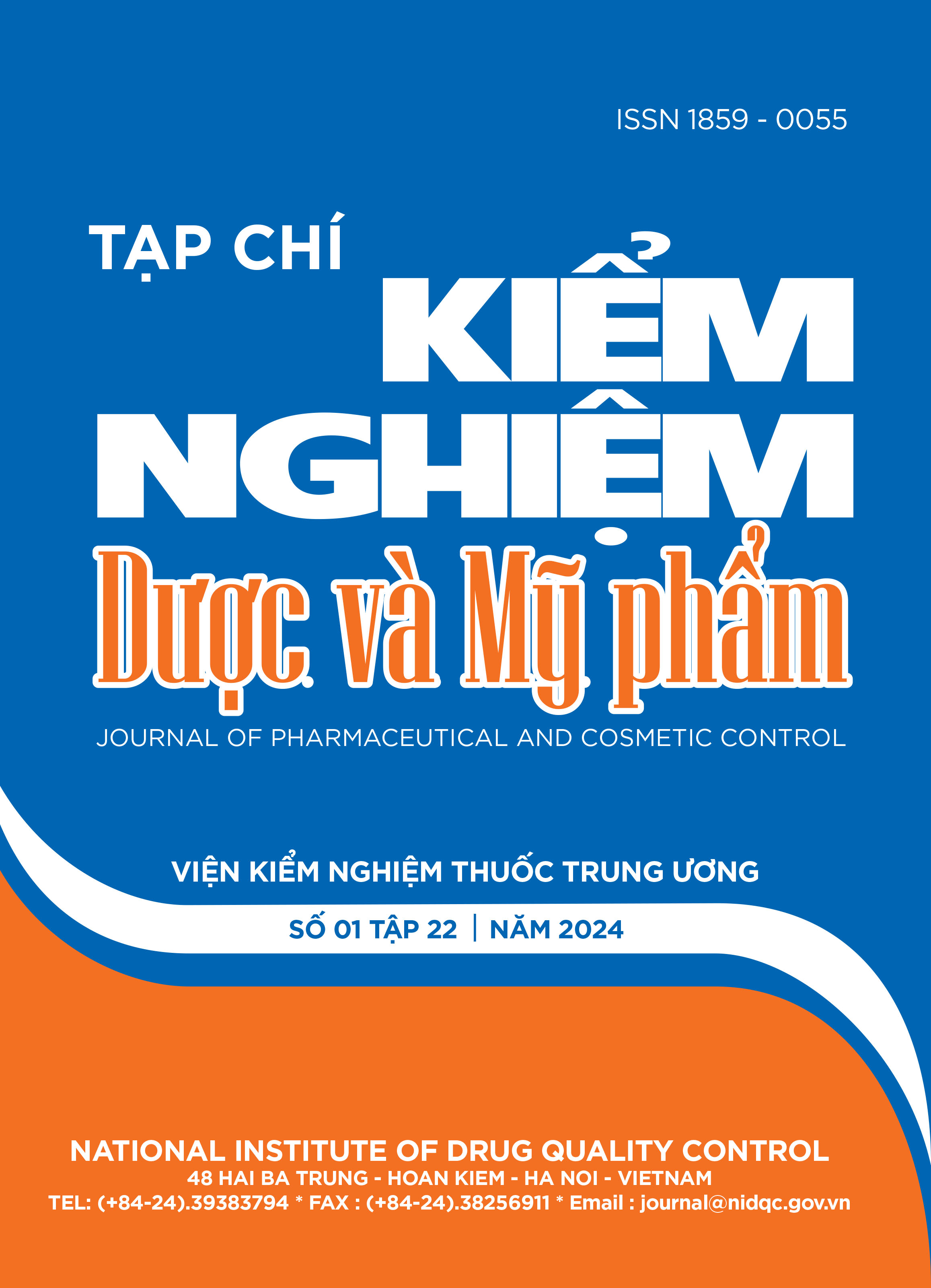Study on extraction and purification of scopoletin from Radix Eurycomae longifoliae for reference stadndard establishment.
Main Article Content
Abstract
Scopoletin (SCOP) is a coumarin synthesized by diverse medicinal and edible plants, which plays a vital role as a therapeutic and chemopreventive agent in the treatment of a variety of diseases. SCOP was one of the major substances in Radix Eurycomae longifoliae, so which would be a potentially chemical marker for control quality of this herbal material. This study have been developed an extraction and purification procedure of SCOP for establishing its reference standard. In this procedure, the Radix Eurycoma longifolia powerder was ultrasonically extracted with ethanol 50 % (v/v), and then ethanol was evaporated in vacuo to give water suspension. The suspension was suscessively partitioned with dichloromethan, eluted on silica column and crystallized by using the combination of dichlromethan and methanol at suitable ratios to obtain crystal. Finally, the crystal was purified on C18 column to get SCOP material. The SCOP material, was identified by MS spectrometry, NMR, UV-VIS, IR spectroscopy and melting point at 205,6 oC, contained 98.59 % of scopoletin (C10H8O4), which was calculated form volatile impurities (0.0012 %), residue on ignition (0.013 %) and of related substances (1.41 %). It was concluded that the established procedure was suitable for producing SCOP material for standard references establishment.
Article Details
Keywords
Eurycoma longifolia, scopoletin
References
2. Thu H.E., Hussain Z., Mohamed I.N., Shuid A.N., 2018, Recent Advances in Antibacterial, Antiprotozoal and Antifungal Trends of Eurycoma longifolia: A Review of Therapeutic Implications and Future Prospects, Current drug targets, 19(14), pp. 1657-71.
3. Thu H.E., Hussain Z., Mohamed I.N., Shuid A.N., 2018, Eurycoma longifolia, A Potential Phytomedicine for the Treatment of Cancer: Evidence of p53-mediated Apoptosis in Cancerous Cells, Current drug targets, 19(10), pp. 1109-26.
4. Bhat R., Karim A.A., 2010, Tongkat Ali (Eurycoma longifolia Jack): a review on its ethnobotany and pharmacological importance, Fitoterapia, 81(7), pp. 669-79.
5. Rehman S.U., Choe K., Yoo H.H., 2016, Review on a Traditional Herbal Medicine, Eurycoma longifolia Jack (Tongkat Ali): Its Traditional Uses, Chemistry, Evidence-Based Pharmacology and Toxicology, Molecules (Basel, Switzerland), 21(3), pp. 331.
6. Chan K.L., Choo C.Y., Morita H., Itokawa H., 1998, High performance liquid chromatography in phytochemical analysis of Eurycoma longifolia, Planta medica, 64(8), pp. 741-5.
7. Parama D., Girisa S., Khatoon E., Kumar A., Alqahtani M.S., Abbas M., et al., 2022, An overview of the pharmacological activities of scopoletin against different chronic diseases, Pharmacological research, 179, pp. 106202.
8. Gao X.Y., Li X.Y., Zhang C.Y., Bai C.Y., 2024, Scopoletin: a review of its pharmacology, pharmacokinetics, and toxicity, Frontiers in pharmacology, 15, pp. 1268464.
9. Đỗ Thị Ngọc Lan, Nguyễn Thị Hằng, Nguyễn Tiến Đạt, Lê Quang Thảo, 2023, Xây dựng phương pháp định lượng đồng thời 4 chất 14,15β-dihydroxyklaineanon, scopoletin, eurycomalacton và 9-methoxycanthin-6-on trong cây Bá bệnh (Radix Eurycoma longifolia), Tạp chí Kiểm nghiệm thuốc, 21(80), pp. 27-31.
10. Wu Y.B., Zheng C.J., Qin L.P., Sun L.N., Han T., Jiao L., et al., 2009, Antiosteoporotic activity of anthraquinones from Morinda officinalis on osteoblasts and osteoclasts, Molecules (Basel, Switzerland), 14(1), pp. 573-83.
11. AOAC, 2016, AOAC Official Methods of Analysis in Appendix F: Guidelines for Standard Method Performance Requirements.


